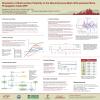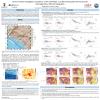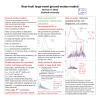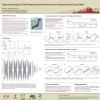Poster #204, Ground Motions
Understanding Crustal Weak Zone Effects on Earthquake Rupture Kinematics Through Dynamic Rupture Modeling
Poster Image:

Poster Presentation
2020 SCEC Annual Meeting, Poster #204, SCEC Contribution #10461 VIEW PDF
The material state in the shallow crust transitions from ductile in the uppermost crust (0~4km) to brittle in the seismogenic zone (4~20 km). The depth variation of material frictional properties of the crust determines how the fracture energy is consumed by the earthquake rupture, and how the frequency content of seismic energy released during the earthquake varies in space and time. Using dynamic rupture modeling with depth-dependent heterogeneous stress drop models, incorporating weak zone effects, we investigated the underlying physical processes of rupture during moderate size strike slip earthquakes on a fault that breaks the ground surface. Through a series of numerical simulations we were able to extract and generalize kinematic rupture characteristics, such as changes in the shape of slip rate functions, rupture velocity, and peak slip rate in the weak zone and across the fault. These findings can guide necessary refinements to kinematic rupture modeling techniques that are being use in deterministic broad-band ground motion simulations.




















































